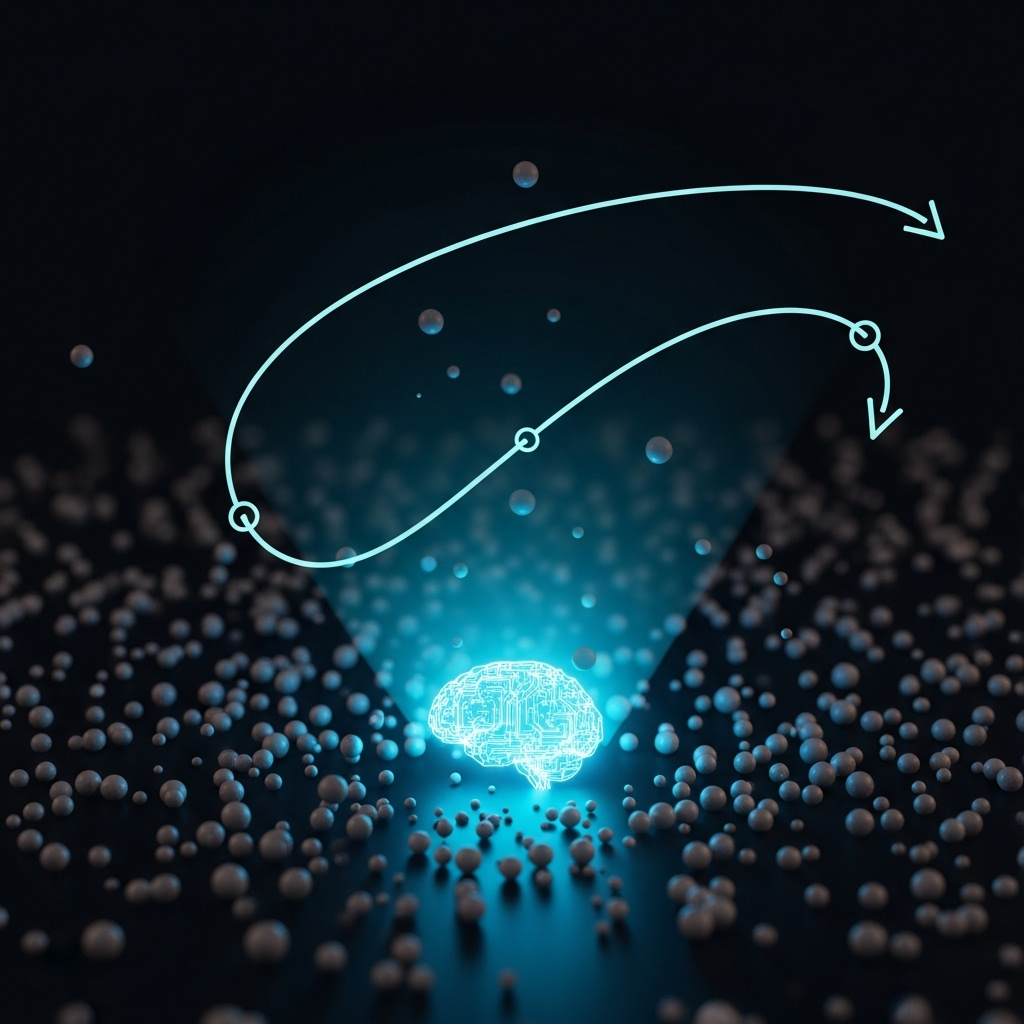
In the world of machine learning, there is no "one model to rule them all." The "No Free Lunch" theorem famously states that no single algorithm works best for every problem. The reason for this lies in a fundamental concept: inductive bias.
At its core, inductive bias refers to the set of assumptions a learning algorithm uses to generalize from the finite training data it has seen to new, unseen data. Think of it as the model's "worldview" or its built-in beliefs about the nature of the problem it's trying to solve.
An algorithm with no inductive bias is effectively useless. It could only memorize the training data and would be incapable of making predictions on anything new. The bias is what allows it to learn.
Why Does Inductive Bias Matter?
Choosing a model is not just about picking the one with the highest accuracy on a leaderboard; it's about matching the model's inductive bias to the inherent structure of your data and problem. When the bias aligns with the problem, the model learns more efficiently, requires less data, and generalizes better. When it misaligns, the model struggles, leading to poor performance or the need for vast amounts of data to overcome its own flawed assumptions.
Common Models and Their Biases
Let's explore the biases of some of the most powerful models in the AI toolkit:

- Linear Regression: Its bias is one of strict linearity. It assumes that the output is a linear combination of the inputs. This is a very strong bias, making it unsuitable for complex, non-linear problems but highly effective and interpretable for simple ones.
- Decision Trees & Gradient Boosted Trees (XGBoost, LightGBM): Their bias is toward hierarchical, axis-aligned structures. They learn by repeatedly splitting the data along feature axes. They are fantastic for tabular data but struggle with relationships that aren't easily captured by these rectangular splits, such as spatial patterns in images.
- Support Vector Machines (SVMs): The primary bias is for finding the maximum margin hyperplane. SVMs assume that the best decision boundary is the one that is furthest from the data points of any class, which often leads to excellent generalization.
- Convolutional Neural Networks (CNNs): CNNs possess a powerful inductive
bias for spatial data. Their core assumptions are:
- Locality: Pixels that are close together are related. This is encoded by small convolutional filters.
- Translation Invariance: An object (e.g., a cat) is still a cat regardless of where it appears in an image. This is achieved through weight sharing and pooling layers.
- Graph Neural Networks (GNNs): The inductive bias of GNNs is centered on relational structures and permutation invariance. They assume that entities (nodes) are defined by their own features and the features of their neighbors. This makes them ideal for analyzing social networks, molecular structures, and recommendation systems where the connections between items are as important as the items themselves.
- Transformers: Originally designed for sequential data, the Transformer's core inductive bias is its attention mechanism. It assumes that any element in a sequence can be related to any other element, regardless of distance, and that the strength of these relationships is learnable. This lack of a strong sequential or local bias (compared to RNNs or CNNs) makes them incredibly flexible and powerful, allowing them to dominate Natural Language Processing and even make inroads into computer vision.
Choosing the Right Model
The key to effective model selection is to critically analyze your problem:
- What is the structure of your data? Is it a grid (image)? A sequence (text)? A flat table? Or a network of relationships (graph)?
- What are the underlying patterns you expect? Are relationships linear? Is there a sense of "closeness" that matters? Does order matter? Or are long-range, complex interactions more important?
By answering these questions, you can align your problem with a model's inductive bias. If you're classifying images, the spatial bias of a CNN is a natural fit. If you're analyzing customer purchase histories, the sequential and relational bias of a Transformer is a powerful choice. For understanding chemical compounds or social networks, the relational structure of a GNN is unparalleled. Understanding these inherent assumptions is not just an academic exercise—it's the foundation of practical, efficient, and intelligent system engineering.
At Aliac, we specialize in this process: matching deep problem understanding with the right architectural choices to build solutions that work. If you're looking to turn your data challenges into operational advantages, let's connect.